CX fatigue refers to the exhaustion and disengagement customers experience due to brands’ excessive and often intrusive engagement efforts. How can you tackle this?
Customers aren’t more engaged. They’re exhausted.So, how do we fix this CX fatigue? By shifting from “more” engagement to “meaningful” engagement. Let’s get into it.
The Over-Engagement Trap
CX is supposed to make interactions easier, but many brands have mistaken quantity for quality.
You make a purchase, and an email survey arrives immediately. Then, another asked for a review. Then, a reminder about the loyalty program. Then, a chatbot checks if you need assistance.
AI-powered recommendations and retargeting ads follow you everywhere, assuming that one click signals desperation to buy.
Even simple transactions like ordering food, booking a flight, or making a return—trigger a flood of messages, notifications, and follow-ups that feel more intrusive than helpful.
Customers didn’t ask for this level of engagement. Many are actively avoiding it.
Why CX Fatigue is Real
1. Customers Want Simplicity, Not Over-Engagement
The best experiences are effortless. When a brand makes it easy for a customer to get what they need, there’s no need for constant reminders. Too many brands mistake “seamless” for “constant” and overload customers with unnecessary interactions.
2. More Data, More Problems
Yes, data is valuable, but just because a brand can engage doesn’t mean it should. If every digital action triggers an automated response, it stops feeling like service and starts feeling like surveillance.
3. Loyalty Overload
Brands compete for attention with endless VIP tiers, reward programs, and personalised offers. If every company runs a loyalty program, none of them feel special. Honest loyalty isn’t created through aggressive engagement. It’s built through trust.
4. Customers Are Opting Out
People are setting boundaries. Seventy-two percent of customers have unsubscribed from brand emails due to excessive communication, and many now use ad blockers or ignore brand messages entirely. Over-engagement doesn’t build relationships—it often pushes customers away.
How Brands Can Prevent CX Fatigue
1. Engagement Should Be a Choice, Not a Chore
Instead of assuming customers want more engagement, let them decide. Give them control over how often they hear from you and through what channels.
2. Prioritise the Moments That Matter
Not every interaction requires a follow-up. Instead of automating engagement at every step, focus on key moments where a customer needs support or added value.
3. Personalisation Should Feel Human, Not Robotic
AI can be powerful, but it can feel relentless and impersonal when overused. Instead of automating for the sake of automation, use technology to reduce effort for customers—not just to increase engagement.
4. Rethink Loyalty Beyond Transactions
Loyalty isn’t just about rewards and discounts. It comes from consistently delivering great experiences that make customers want to return, not because they feel pressured but because they trust your brand.
The Future of CX: Less Noise, More Impact
The brands that succeed in CX will be the ones that recognise that customers don’t need more interactions; they need better ones. Reducing engagement clutter, refining touchpoints, and focusing on meaningful interactions will define the future of customer experience.
How to Prevent CX Fatigue: A Smarter Approach to Customer Engagement
Customer Experience (CX) is the foundation of modern business growth, but many brands overwhelm customers with excessive engagement. In pursuing seamless and personalised interactions, companies often flood customers with too many touchpoints, unnecessary follow-ups, and constant notifications.
Instead of enhancing experiences, this approach leads to CX fatigue—where customers disengage, ignore outreach, or even develop negative perceptions of the brand. The solution is not more engagement but more meaningful engagement.
By adopting a structured approach to CX strategy, businesses can optimise interactions, reduce friction, and foster stronger customer relationships without overwhelming their audience.
ALSO READ: The Future of Self-Service in CX: Essential or Overrated?
Shift From Quantity to Quality Engagement
The Problem
Brands assume that increasing engagement frequency improves CX. Customers do not want to be pursued across email, SMS, and social media for every minor interaction.
The Solution: The 3R Model (Reputation, Reach, Relationship)
Reputation builds trust, ensuring customers engage because they want to, not because they are constantly reminded. Reach leverages AI-driven insights to deliver messages at the right time, in the right channel, instead of sending repetitive, untargeted communications. The relationship focuses on value over volume, ensuring that interactions are meaningful rather than excessive.
Action Plan
- Limit automated follow-ups to instances where a meaningful response is expected.
- Use AI-driven sentiment analysis to detect when customers need assistance.
- Optimise CX touchpoints based on customer behaviour rather than internal marketing or service KPIs.
Measure CX by Business Impact
The Problem
Many organisations still rely on traditional CX metrics such as Net Promoter Score (NPS) and Customer Satisfaction (CSAT), which fail to connect engagement efforts to actual business outcomes.
The Solution: Financial-Driven CX Metrics
To measure CX impact effectively, businesses must focus on revenue per customer to track whether CX improvements lead to higher spending, customer lifetime value to determine if engagement efforts increase long-term loyalty, churn rate reduction to assess if CX strategies contribute to customer retention, and cost-to-serve efficiency to ensure CX initiatives scale without inflating operational costs.
Action Plan
- Embed CX metrics in executive dashboards so engagement efforts are tied to financial performance.
- Shift KPIs from engagement frequency to engagement efficiency.
- Track CX cost savings by reducing unnecessary interactions and optimising engagement strategies.
Use AI to Personalise Without Overloading
The Problem
AI-driven engagement has the potential to enhance CX, but excessive automation can make interactions feel robotic and intrusive. Customers disengage when brands appear to know too much or bombard them with hyper-personalised messaging.
The Solution: The 4E Framework (Economic, Efficient, Emotional, Empathetic)
Economic engagement ensures that customers perceive value rather than just another promotional message. Efficient engagement reduces friction by eliminating unnecessary steps in the customer journey. Emotional engagement makes interactions feel genuine and relevant rather than automated. Empathetic engagement respects customer preferences and prevents digital exhaustion.
Action Plan
- Allow customers to set their engagement preferences, giving them control over frequency and channels.
- Use behavioural analytics to predict when customers need assistance.
- Implement engagement throttling to adjust outreach based on customer responses dynamically.
ALSO READ: Putting The Often-Confusing Dilemma to Rest: Omnichannel vs Multichannel CX
Optimise CX with Real-Time Adjustments
The Problem
Most CX strategies are static, leading to outdated engagement models that do not evolve with changing customer behaviour.
The Solution: Real-Time CX Execution
AI-driven monitoring enables brands to detect customer fatigue signals such as declining email open rates, survey opt-outs, and decreasing response rates. Based on these signals, adaptive engagement models adjust communication frequency in real-time. Dynamic CX workflows ensure that customer interactions are continuously optimised.
Action Plan
- Set up real-time tracking dashboards to monitor engagement trends and drop-offs.
- Automate pause engagement triggers for customers who repeatedly ignore outreach.
- Introduce CX cool-down periods to allow customers space between interactions.
Align CX with International Best Practices
The Problem
CX execution varies by market, leading to inconsistencies in engagement strategies and customer perceptions.
The Solution: Standardised CX Strategy with Global Benchmarks
By adopting ICXI-aligned training programs, businesses can ensure that engagement efforts remain consistent across all regions. Benchmarking engagement models against global CX leaders provide insights into best practices. CX governance models help prevent over-engagement by aligning different departments, such as marketing, sales, and customer service, under a unified strategy.
Action Plan
- Conduct CX audits across different regions to identify engagement overload risks
- Train teams to balance automation with human interaction, ensuring that customers receive the right level of engagement.
- Adopt a single engagement strategy to prevent conflicting or redundant interactions across all channels.
The Phenomenon of CX Fatigue
Definition and Emergence
CX fatigue refers to the exhaustion and disengagement customers experience due to brands’ excessive and often intrusive engagement efforts. This phenomenon has gained attention as companies increasingly leverage data-driven strategies to enhance customer interaction frequency and personalisation.
Empirical Evidence
- Survey Fatigue: Research indicates that only 9% of individuals thoughtfully complete lengthy surveys, while 70% abandon them midway. This highlights a critical issue: over-surveying diminishes response rates and frustrates customers, potentially harming the brand’s reputation. ( Customer Thermometer)
- Email Overload: A case study involving a major retailer revealed that uncoordinated email campaigns from multiple departments led to customer overload. This bombardment resulted in negative customer experiences and a subsequent decline in sales, underscoring the detrimental effects of excessive communication.(RRD)
Psychological Underpinnings
Decision Fatigue
Decision fatigue elucidates how the quality of decisions deteriorates after an extended decision-making period. In a consumer context, constant exposure to choices exacerbated by relentless marketing and engagement efforts can lead to decision avoidance and reduced satisfaction. (Kaav Publications)
Moral Licensing and Customer Behaviour
Studies have shown that when customers frequently engage in positive behaviours (e.g., providing feedback or participating in loyalty programs), they may develop a sense of moral licensing. This can paradoxically lead to entitlement and, subsequently, dysfunctional behaviours, especially when they experience fatigue from their participatory roles.(Emerald)
Balancing Engagement and Fatigue
Strategic Implications
To mitigate CX fatigue, brands must adopt a balanced approach:
- Personalisation vs. Intrusiveness: While personalised experiences can enhance satisfaction, they must be executed judiciously. Over-personalisation can backfire, especially when perceived as invasive, leading to discomfort and disengagement.
- Optimal Engagement Frequency: Determining the right cadence for customer interactions is crucial.
Final thoughts
The pursuit of customer engagement has evolved into a battleground where brands fight for attention with relentless precision. What was once an effort to build relationships has become an obsession with extracting data, maximising interactions, and engineering loyalty.
The irony is evident. Companies claim to value customer-centricity, yet they disregard the most fundamental truth. Customers do not exist to be engaged. They do not want to be nudged, tracked, or incentivised into loyalty. They want brands to be helpful when needed and invisible when not.
The brands that refuse to recognise this shift will continue drowning their customers in notifications, surveys, and AI-driven nudges, mistaking presence for preference. Meanwhile, the brands that dare to step back, reduce friction, and let customers lead the interaction will be the ones that genuinely master customer experience.
Less engagement is not a failure. It is a strategy.
ALSO READ: Tips to Boost Your Loyalty Programs for Modern Customers






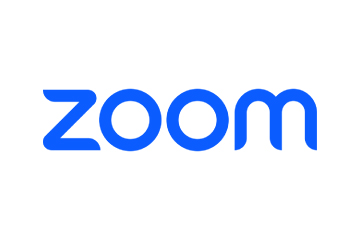
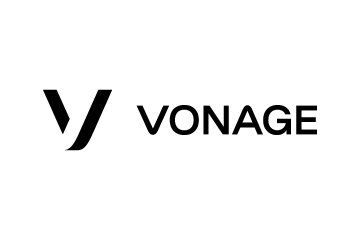

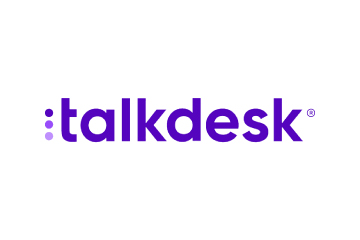

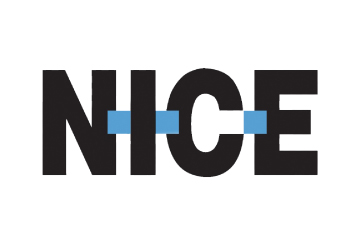






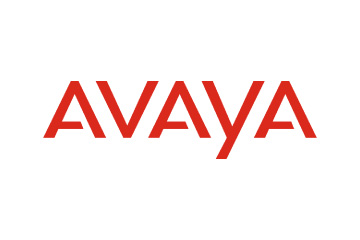
 Amplitude is a product analytics platform, enabling businesses to track visitors with the help of collaborative analytics. The platform leverages the capabilities of
Amplitude is a product analytics platform, enabling businesses to track visitors with the help of collaborative analytics. The platform leverages the capabilities of 

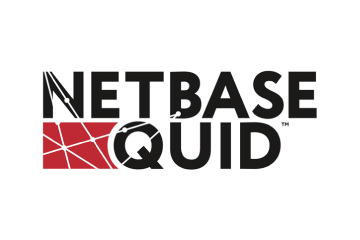

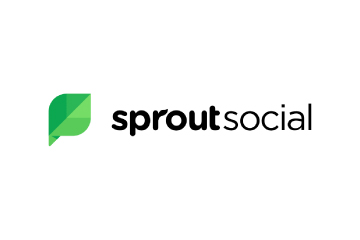
 Zoho Social, a part of Zoho’s suite of 50+ products, is a comprehensive social media management platform for businesses and agencies. The Zoho Social dashboard includes a robust set of features, such as Publishing Calendar, Bulk Scheduler, and Approval Management to offer businesses all the essential social media publishing tools. Its monitoring tools help enterprises track and respond to relevant social conversations.
Zoho Social, a part of Zoho’s suite of 50+ products, is a comprehensive social media management platform for businesses and agencies. The Zoho Social dashboard includes a robust set of features, such as Publishing Calendar, Bulk Scheduler, and Approval Management to offer businesses all the essential social media publishing tools. Its monitoring tools help enterprises track and respond to relevant social conversations.

 Microsoft Dynamics 365 represents a robust cloud-based CRM solution with features such as pipeline assessment, relationship analytics, and conversational intelligence. It utilises AI-powered insights to provide actionable intelligence via predictive analytics, lead scoring, sentiment analysis, etc. Currently, Microsoft operates in 190 countries and is made up of more than 220,000 employees worldwide.
Microsoft Dynamics 365 represents a robust cloud-based CRM solution with features such as pipeline assessment, relationship analytics, and conversational intelligence. It utilises AI-powered insights to provide actionable intelligence via predictive analytics, lead scoring, sentiment analysis, etc. Currently, Microsoft operates in 190 countries and is made up of more than 220,000 employees worldwide.

 HubSpot is an inbound marketing, sales, and customer service software provider, offering robust CRM and automation solutions. Some of its products include Marketing Hub, Sales Hub, Operations Hub, Content Hub, Commerce Hub, Marketing Analytics and Dashboard Software. Guided by its inbound methodology, HubSpot enables companies to prioritise innovation and customer success.
HubSpot is an inbound marketing, sales, and customer service software provider, offering robust CRM and automation solutions. Some of its products include Marketing Hub, Sales Hub, Operations Hub, Content Hub, Commerce Hub, Marketing Analytics and Dashboard Software. Guided by its inbound methodology, HubSpot enables companies to prioritise innovation and customer success.
 Monday.com is a project management software company, offering a cloud-based platform that enables businesses
Monday.com is a project management software company, offering a cloud-based platform that enables businesses 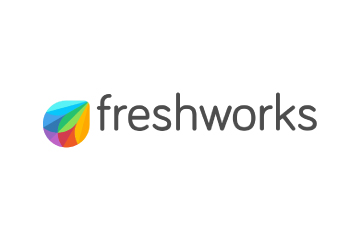 Headquartered in San Mateo, California, Freshworks is a global AI-powered business software provider. Its tech stack includes a scalable and comprehensive suite for IT, customer support, sales, and marketing teams, ensuring value for immediate business impact. Its product portfolio includes Customer Service Suite, Freshdesk, Freshchat, Freshcaller, Freshsuccess, and Freshservice. Freshservice for Business Teams has helped several global organisations to enhance their operational efficiency.
Headquartered in San Mateo, California, Freshworks is a global AI-powered business software provider. Its tech stack includes a scalable and comprehensive suite for IT, customer support, sales, and marketing teams, ensuring value for immediate business impact. Its product portfolio includes Customer Service Suite, Freshdesk, Freshchat, Freshcaller, Freshsuccess, and Freshservice. Freshservice for Business Teams has helped several global organisations to enhance their operational efficiency.
 Talkdesk offers an innovative AI-powered customer-centric tech stack to its global partners. The company provides generative AI integrations, delivering industry-specific solutions to its customers. Talkdesk CX Cloud and Industry Experience Clouds utilise modern machine learning and language models to enhance contact centre efficiency and client satisfaction.
Talkdesk offers an innovative AI-powered customer-centric tech stack to its global partners. The company provides generative AI integrations, delivering industry-specific solutions to its customers. Talkdesk CX Cloud and Industry Experience Clouds utilise modern machine learning and language models to enhance contact centre efficiency and client satisfaction.



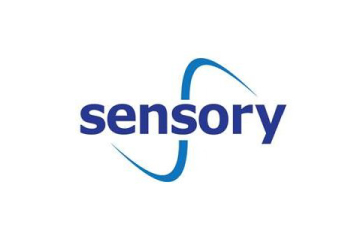
 The company offers comprehensive cloud-based solutions, such as Microsoft Dynamics 365, Gaming Consoles, Microsoft Advertising, Copilot, among other things, to help organisations offer enhanced CX and ROI. Its generative-AI-powered speech and voice recognition solutions,such as Cortana and Azure Speech Services empowers developers to build intelligent applications.
The company offers comprehensive cloud-based solutions, such as Microsoft Dynamics 365, Gaming Consoles, Microsoft Advertising, Copilot, among other things, to help organisations offer enhanced CX and ROI. Its generative-AI-powered speech and voice recognition solutions,such as Cortana and Azure Speech Services empowers developers to build intelligent applications.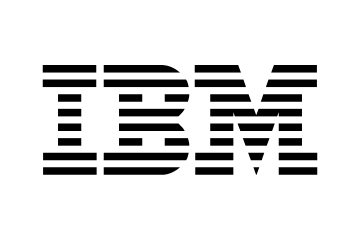 IBM is a global hybrid cloud and AI-powered
IBM is a global hybrid cloud and AI-powered  Uniphore is an enterprise-class, AI-native company that was incubated in 2008. Its enterprise-class multimodal AI and data platform unifies all elements of voice, video, text and data by leveraging Generative AI, Knowledge AI, Emotion AI and workflow automation. Some of its products include U-Self Serve, U-Assist, U-Capture, and U-Analyze. Its Q for Sale is a conversational intelligence software that guides revenue teams with AI-powered insights, offering clarity on how to effectively keep prospects engaged.
Uniphore is an enterprise-class, AI-native company that was incubated in 2008. Its enterprise-class multimodal AI and data platform unifies all elements of voice, video, text and data by leveraging Generative AI, Knowledge AI, Emotion AI and workflow automation. Some of its products include U-Self Serve, U-Assist, U-Capture, and U-Analyze. Its Q for Sale is a conversational intelligence software that guides revenue teams with AI-powered insights, offering clarity on how to effectively keep prospects engaged. Google Cloud accelerates every organisation’s ability to digitally transform its business. Its enterprise-grade solutions leverage modern technology to solve the most criticial business problems
Google Cloud accelerates every organisation’s ability to digitally transform its business. Its enterprise-grade solutions leverage modern technology to solve the most criticial business problems 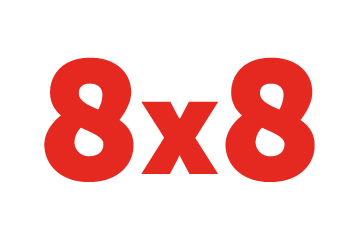 8×8 offers out-of-the-box contact centre solutions, assisting all-size businesses to efficiently meet customer needs and preferences. It offers custom CRM integrations support and integrates effortlessly with third-party CRMs like Salesforce, Microsoft Dynamics, Zendesk, and more. Offering global support in all time zones & development teams in 5 continents, its patented geo-routing solution ensures consistent voice quality.
8×8 offers out-of-the-box contact centre solutions, assisting all-size businesses to efficiently meet customer needs and preferences. It offers custom CRM integrations support and integrates effortlessly with third-party CRMs like Salesforce, Microsoft Dynamics, Zendesk, and more. Offering global support in all time zones & development teams in 5 continents, its patented geo-routing solution ensures consistent voice quality. Sprinklr is a comprehensive enterprise software company for all customer-focused functions. With advanced AI, Sprinklr’s unified customer experience management (Unified-CXM) platform lets organisations offer human experiences to every customer, every time, across any modern channel.
Sprinklr is a comprehensive enterprise software company for all customer-focused functions. With advanced AI, Sprinklr’s unified customer experience management (Unified-CXM) platform lets organisations offer human experiences to every customer, every time, across any modern channel.


 Upland offers a comprehensive suite of contact centre and customer service solutions with products including InGenius, Panviva, Rant & Rave, and RightAnswers. InGenius enables organisations to connect their existing phone system with CRM, further enhancing agent productivity. Panviva provides compliant and omnichannel capabilities for highly regulated industries. Whereas, Rant & Rave, and RightAnswers are its AI-powered solutions,
Upland offers a comprehensive suite of contact centre and customer service solutions with products including InGenius, Panviva, Rant & Rave, and RightAnswers. InGenius enables organisations to connect their existing phone system with CRM, further enhancing agent productivity. Panviva provides compliant and omnichannel capabilities for highly regulated industries. Whereas, Rant & Rave, and RightAnswers are its AI-powered solutions, 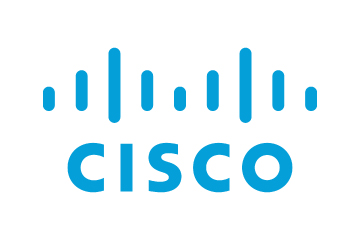


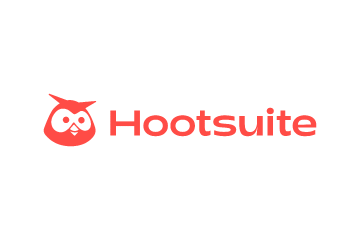 Hootsuite, headquartered in Vancouver, is a social media management platform that streamlines the process of managing multiple social media accounts. Some of its core offerings include social media content planning and publishing, audience engagement tools, analytics and social advertising. Its easy-to-integrate capabilities help marketing teams to schedule and publish social media posts efficiently.
Hootsuite, headquartered in Vancouver, is a social media management platform that streamlines the process of managing multiple social media accounts. Some of its core offerings include social media content planning and publishing, audience engagement tools, analytics and social advertising. Its easy-to-integrate capabilities help marketing teams to schedule and publish social media posts efficiently.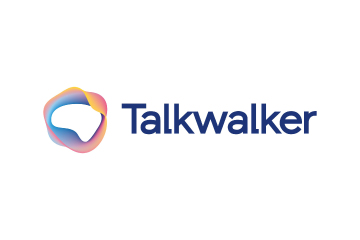
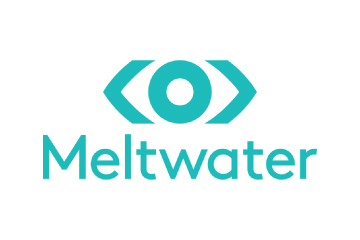
 Brandwatch enables businesses to build and scale the optimal strategy for their clients with intuitive, use-case-focused tools that are easy and quick to master. Bringing together consumer intelligence and social media management, the company helps its users react to the trends that matter, collaborate on data-driven content, shield the brand from threats and manage all the social media channels at scale.
Brandwatch enables businesses to build and scale the optimal strategy for their clients with intuitive, use-case-focused tools that are easy and quick to master. Bringing together consumer intelligence and social media management, the company helps its users react to the trends that matter, collaborate on data-driven content, shield the brand from threats and manage all the social media channels at scale.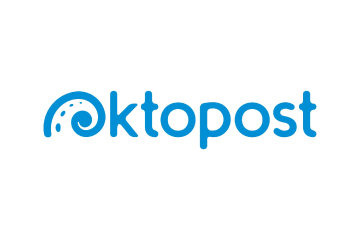

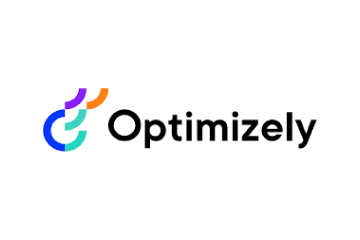
 Adobe Experience Cloud offers a comprehensive set of applications, capabilities, and services specifically designed to address day-to-day requirement for personalised customer experiences at scale. Its platform helps play an essential role in managing different digital content or assets to improve customer happiness. Its easy-to-optimise content gives users appropriate marketing streams, ensuring product awareness.
Adobe Experience Cloud offers a comprehensive set of applications, capabilities, and services specifically designed to address day-to-day requirement for personalised customer experiences at scale. Its platform helps play an essential role in managing different digital content or assets to improve customer happiness. Its easy-to-optimise content gives users appropriate marketing streams, ensuring product awareness.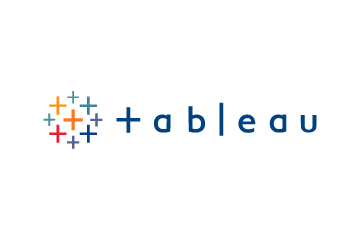 Salesforce-owned Tableau is an AI-powered analytics and business intelligence platform, offering the breadth and depth of capabilities that serve the requirements of global enterprises in a seamless, integrated experience. Marketers can utilise generative AI models, AI-powered predictions, natural language querying, and recommendationsons.
Salesforce-owned Tableau is an AI-powered analytics and business intelligence platform, offering the breadth and depth of capabilities that serve the requirements of global enterprises in a seamless, integrated experience. Marketers can utilise generative AI models, AI-powered predictions, natural language querying, and recommendationsons. Contentsquare is a cloud-based digital experience analytics platform, helping brands track billions of digital interactions, and turn those digital
Contentsquare is a cloud-based digital experience analytics platform, helping brands track billions of digital interactions, and turn those digital 
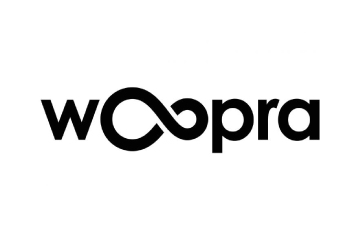

 Zoho Corporation offers innovative and tailored software to help leaders grow their business. Zoho’s 55+ products aid sales and marketing, support and collaboration, finance, and recruitment requirements. Its customer analytics capabilities come with a conversational feature, Ask Zia. It enables users to ask questions and get insights in the form of reports and widgets in real-time.
Zoho Corporation offers innovative and tailored software to help leaders grow their business. Zoho’s 55+ products aid sales and marketing, support and collaboration, finance, and recruitment requirements. Its customer analytics capabilities come with a conversational feature, Ask Zia. It enables users to ask questions and get insights in the form of reports and widgets in real-time. Fullstory is a behavioural data platform, helping C-suite leaders make informed decisions by injecting digital behavioural data into its analytics stack. Its patented technology uncovers the power of quality behavioural data at scale, transforming every digital visit into actionable insights. Enterprises can increase funnel conversion and identify their highest-value customers effortlessly.
Fullstory is a behavioural data platform, helping C-suite leaders make informed decisions by injecting digital behavioural data into its analytics stack. Its patented technology uncovers the power of quality behavioural data at scale, transforming every digital visit into actionable insights. Enterprises can increase funnel conversion and identify their highest-value customers effortlessly.
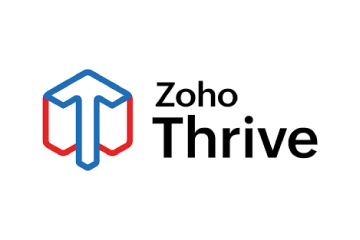
 Started in 2005 in a Sweden-based small town, Norrköping, Voyado offers a customer experience cloud platform that includes a customer loyalty management system. This platform helps businesses design and implement customer loyalty programs, track customer
Started in 2005 in a Sweden-based small town, Norrköping, Voyado offers a customer experience cloud platform that includes a customer loyalty management system. This platform helps businesses design and implement customer loyalty programs, track customer 



 TapMango provides a comprehensive, customisable, flexible and feature-rich customer loyalty program. The loyalty tools include an integrated suite of customised consumer-facing technology, easy-to-use merchant tools, and automation algorithms, all aimed at enhancing customer experience. Adaptable to any industry, TapMango’s platform helps merchants compete with larger chains, converting customer one-time purchases into profitable spending habits.
TapMango provides a comprehensive, customisable, flexible and feature-rich customer loyalty program. The loyalty tools include an integrated suite of customised consumer-facing technology, easy-to-use merchant tools, and automation algorithms, all aimed at enhancing customer experience. Adaptable to any industry, TapMango’s platform helps merchants compete with larger chains, converting customer one-time purchases into profitable spending habits.
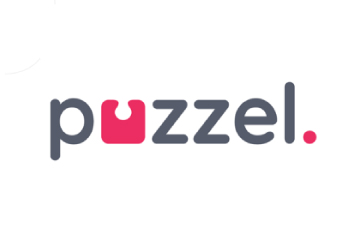
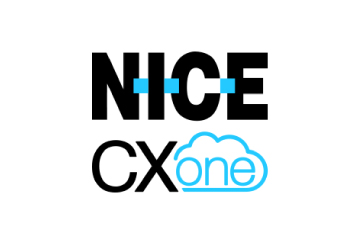
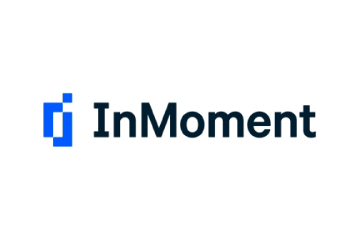

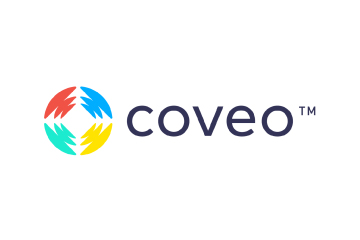
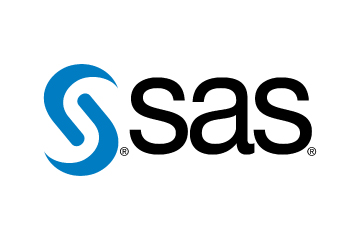
 Adobe Experience Cloud offers a comprehensive set of applications, capabilities, and services specifically designed to address day-to-day requirements for personalised customer experiences at scale. Its innovative platform has played an essential role in managing different digital content or assets, to improve customer happiness or satisfaction. Some of its products include Adobe Gen Studio, Experience Manager Sites, Real-time CDP, and Marketo Engage.
Adobe Experience Cloud offers a comprehensive set of applications, capabilities, and services specifically designed to address day-to-day requirements for personalised customer experiences at scale. Its innovative platform has played an essential role in managing different digital content or assets, to improve customer happiness or satisfaction. Some of its products include Adobe Gen Studio, Experience Manager Sites, Real-time CDP, and Marketo Engage.

